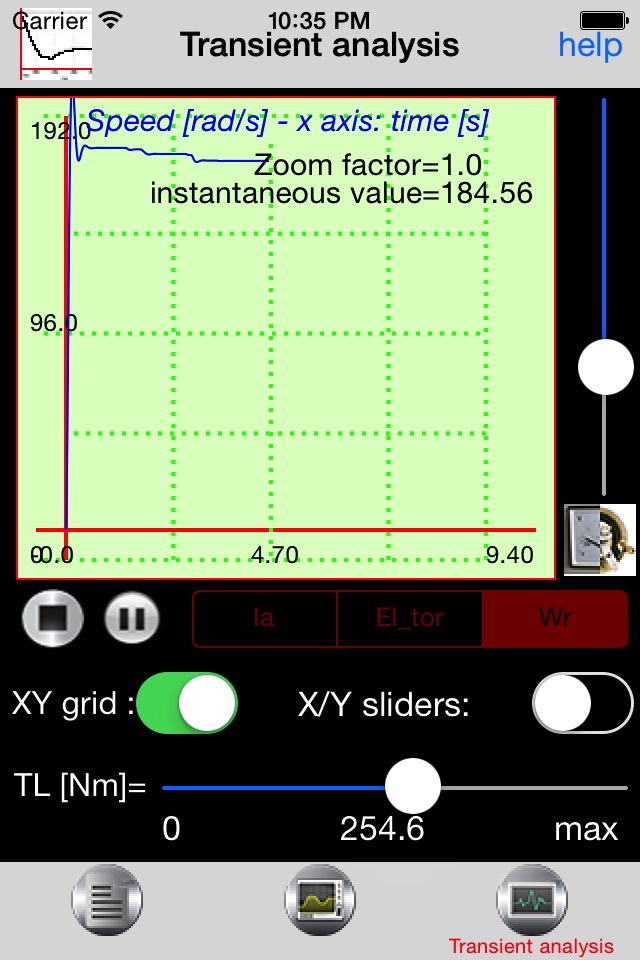
This tool allows examining fundamental characteristics, performing analysis both in steady-state and in transient-state conditions, of a DC separately excited motor. In particular to perform the transient analysis, a complex Runge Kutta solver has been implemented. The numerical solver is based on ad hoc implemented Runge Kutta method, that in this case it solves a 2nd order differential equation system: the first equation is related to the armature winding, and the second one represents the mechanical equilibrium: “d’Alembert” equation.
The application consists in three tabs: “Data management”, “Steady state” and “Transient analysis” respectively.
In the first tab is possible to store all the requested data of several DC motors, by selecting one of several stored motors is possible to examine the behavior either in steady state and transient conditions. In the case that a DC motor data set is unavailable is possible only to press the “Demo” button and a default stored DC motor data set appears.
The second tab is useful to perform a steady state analysis of the selected DC motor. In particular are shown the Motor Shaft speed [rad/s] and the Armature current [A] in function of the Electromagnetic torque. The electrical and/or mechanical quantities are plotted, by touching the screen it is possible to see the values of the graphed quantities. In this version of the app is possible to see also numerical values of the graphed quantities, by touching the bottom left area of the graph window.
At least the third tab is useful to perform the transient analysis. In particular are analyzed the transient of the Armature current and the Electromagnetic torque and Motor Shaft speed in function of the time. Also in this case the electrical and/or mechanical quantities are plotted, in particular during the transient analysis it is possible to change the Load torque applied to the motor shaft. In the Pro version of the app it is possible to see also numerical values of the graphed quantities, by touching the bottom left area of the graph window, when the simulation is in pause state. In order to perform a more accurate transient analysis it is possible to vary, during the simulation, the following electrical quantities: armature voltage, and excitation winding voltage respectively. Furthermore it is possible to study transient phenomena also varying the armature resistance, by adding an external power resistor in series with the armature circuit.



